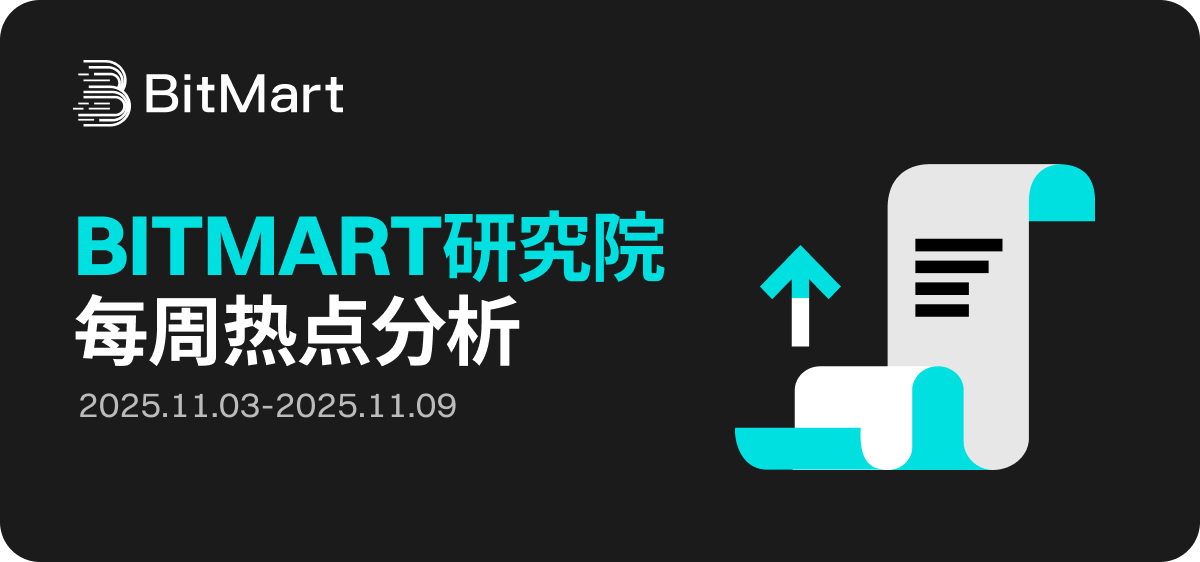According to BitMart's market report on November 10, the total market capitalization of cryptocurrencies was $3.58 trillion over the past week, a decrease of 0.02% from the previous week.

Crypto Market Updates This Week

The crypto market continued its decline, with sentiment weakening further. Following last month's leverage-driven correction, this week saw another large-scale deleveraging, with liquidations reaching $1.2 billion and $1.6 billion respectively over two consecutive days. BTC fell 6.4%, while ETH, SOL, and major altcoins turned negative for the year, with high-beta assets experiencing particularly significant declines, indicating continued capital outflows from risk assets. The market lost nearly $1 trillion in market capitalization, but the correction was primarily driven by technical deleveraging rather than a deterioration in fundamentals. The industry fundamentals remain robust: adoption rates are at record highs, regulatory support continues, and technological innovation is accelerating. However, extremely high leverage amplified volatility, making the market more sensitive to macroeconomic and news events. This wave of liquidations pushed BTC down from approximately $126,000 to around $100,000, triggering systemic risk aversion in the market. Stablecoin data shows that although leveraged positions were cleared, funds remained within the crypto ecosystem and did not flow out in large quantities, instead shifting to stablecoins. The long-term logic remains unchanged, but the market will maintain high volatility in both directions during the short-term leverage reset.
Popular cryptocurrencies this week
Among popular cryptocurrencies, QRE, AIA, COTI, ZEC, and STRK all performed well. QRE's price rose 334% this week. AIA's price rose 229.9%. COTI's price rose 15.3%, with a 24-hour trading volume of 424.33 million. TAO and ZEC rose 12.5% and 8.9% respectively this week.

US Market Overview and Hot News
Last week, risk sentiment in US stocks weakened again, with a significant market correction – the S&P 500 fell approximately 2.04%, and the NYFANG+ index dropped 4.21%, dragged down by weak earnings reports from tech stocks, concerns about AI valuations, and macroeconomic uncertainty. The US dollar index rose 0.26%, supported by rising US Treasury yields and safe-haven demand, while USD/JPY fell 0.72%, and the Japanese yen also strengthened due to safe-haven inflows and a cautious stance from the Bank of Japan. In commodities, gold fell 0.63%, pressured by a stronger dollar; crude oil fell 1.08%, as US crude oil inventories recorded their largest increase since July and Saudi Arabia lowered its selling prices to Asia. The 10-year US Treasury yield remained volatile, pressured by a large amount of Treasury issuance and divergent macroeconomic data, while market volatility increased significantly – the VIX surged 19.86%, and the MOVE index rose 10.19%, reflecting increased hedging demand, heightened liquidity concerns, and the impact of the suspension of key US economic data releases. Overall, the market has shifted back to a defensive stance, with weakening technology momentum, an uncertain macroeconomic outlook, and rising volatility all contributing to the suppression of risk assets.
At 22:45 on November 3, the US released the final reading of the S&P Global Manufacturing PMI for October; the US government shutdown may see a turning point this week;
The U.S. Securities and Exchange Commission (SEC) will make a decision on the Grayscale DOT spot ETF on November 8.
The SBF case will begin a week-long hearing on November 3rd;
Unlocking popular sections and projects
Privacy section
The privacy sector performed strongly over the past week, with ZEC hitting a new all-time high and becoming a key bright spot in a weak market environment, before slightly retreating along with the broader market. Driven by this, DASH also saw a significant rise, indicating a temporary return of funds to the privacy narrative. Despite the outstanding performance within the sector, the overall market remains affected by the events of October 11th, with the altcoin index falling to 25 (BTC-driven) and the fear index at 36 (market fear). The current rise is more a reflection of structural fund rotation than a comprehensive trend reversal.
Linea (LINEA) will unlock approximately 2.88 billion tokens at 7 PM Beijing time on November 10th, representing 16.44% of the current circulating supply, with a value of approximately $34.4 million.
Aptos (APT) will unlock approximately 11.31 million tokens at 2 PM Beijing time on November 11th, representing 0.49% of the current circulating supply, with a value of approximately $33.4 million.
Solayer (LAYER) will unlock approximately 27.02 million tokens at 10 PM Beijing time on November 11th, representing 9.51% of the current circulating supply, with a value of approximately $6.6 million.
PeaQ (PEAQ) will unlock approximately 84.84 million tokens at 8:00 AM Beijing time on November 12th, representing 5.57% of the current circulating supply, with a value of approximately $6 million.
Avalanche (AVAX) will unlock approximately 1.67 million tokens at 8:00 AM Beijing time on November 13th, representing 0.33% of the current circulating supply, with a value of approximately $28.2 million.
Risk warning:
Using BitMart services is entirely at your own risk. All cryptocurrency investments (including returns) are inherently highly speculative and involve a significant risk of loss. Past, assumed, or simulated performance is not indicative of future results.
The value of cryptocurrencies may rise or fall, and there may be significant risks involved in buying, selling, holding, or trading cryptocurrencies. You should carefully consider whether trading or holding cryptocurrencies is right for you, based on your individual investment objectives, financial situation, and risk tolerance. BitMart does not provide any investment, legal, or tax advice.
- 核心观点:加密市场因技术性去杠杆回调,基本面仍稳健。
- 关键要素:
- 市场总市值3.58万亿,周降0.02%。
- 两日爆仓28亿美元,BTC跌至10万。
- 资金转向稳定币,未大量外流。
- 市场影响:短期高波动,长期逻辑未变。
- 时效性标注:短期影响



